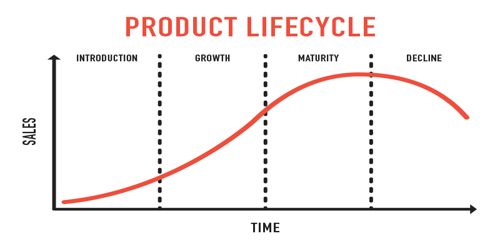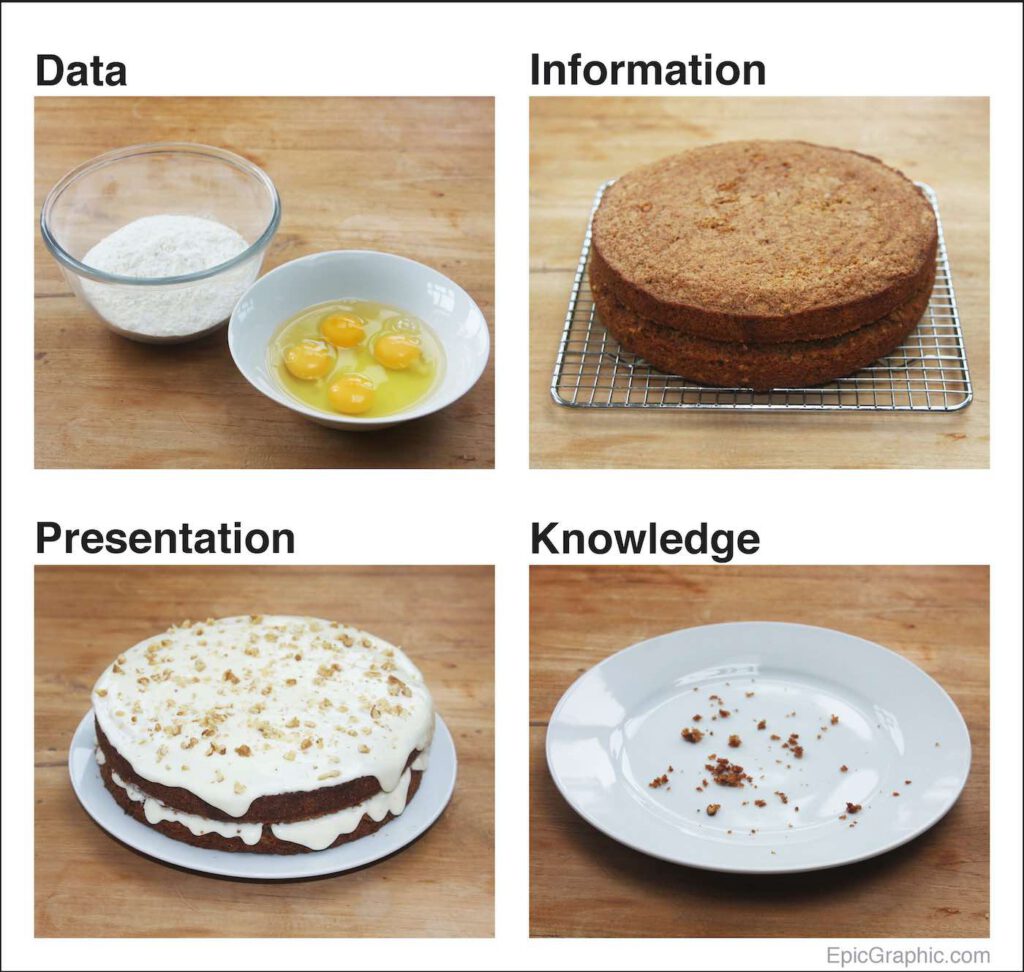9 ways to escape the content rut
We’ve all been there.
You hit upon some success with a few content formats, and you really double down on them. The campaigns are working – the links and coverage are rolling in.
This thing is working like a well-oiled machine.
You’re coasting along, and all is breezy.
And then it happens…
You begin to notice something. A creeping feeling that you can’t quite place at first. But it nags at you. It pulls at you. It sews the seeds of doubt.
And then it whispers…
This isn’t really creative.
This is just the same old thing, over and over again.
When was the last time you did anything different? Anything new? Anything creative?
Longer than you care to admit.
If you’re honest, you took your eye off the ball, and complacency crept in. And no wonder – it was all working so well, so why do anything different?
Except…
It’s not really working that well any more, is it?
It’s okay. But it’s not great. And even if it’s still working, you know it won’t be for long.
There’s a law of diminishing returns at play here.
You’re on borrowed time.
But every ideation session ends up the same.
You go in with good intentions – of coming up with new ideas – but then you just go through the motions. And at a certain point, you become conscious of time.
The pressure builds, and you reach for the nearest thing to hand, the ideas that come most easily to mind – pre-formed, preformulated, and ready to go.
The most Instagrammed…
The most Googled…
A report, a guide, an index.
Whatever.
You know it’s not original. But it’ll probably work. To some extent, at least. You can come up with something more original next time.
You even believe yourself too.
But somewhere deep down, that uncomfortable feeling won’t leave you alone. It’s getting harder to ignore. It’s growing. It might even be spreading.
You’ve heard others in the team talking about it – you’ve heard murmurs from other teams too. The client has made a few comments..
You’ve seen tweets from journalists complaining about these campaigns.
This doesn’t feel great.
You know you want to do something about it. But somehow you keep going over the same old ground.
WELCOME … To the content rut!
Look, I get it. I’ve been there too.
We milked the same format for four years for Simply Business when I was Head of Creative at Distilled. And honestly, it was great. The links were rolling in – hundreds and hundreds of them – we were smashing it!
But then it turned.
We could see the link count slowly dropping.
We knew we were on the slide. But despite the foresight, despite the warning, we didn’t get our act together in time. The campaigns stopped working, the client wanted more creative ideas, and we fumbled.
The next few campaigns failed, the client decided we’d gone off the boil, and they were gone. Quite right too.
We saw all the warning signs but didn’t change course.
We could see the iceberg ahead – and somehow, we still steered straight into it.
What can I say? Habits are seductive. They can be useful but they can also be a trap. And the habits that harm us offer short-term relief and long-term pain.
It takes an act of will power to snap out of them.
And prolonged effort too.
Given the choice between a campaign you’re confident will work to some degree, and one that might not work at all – and given that you’ll have to answer to your client about its performance – most people will take the comfortable option.
A bird in the hand and all that.
But deep down, you know, if you don’t make some kind of change, there’s only one way this is headed.
So what can you do?
Quite a lot as it happens…
9 strategies to escape the content rut
1. The portfolio strategy
A financial adviser will generally suggest you invest your money in a range of assets – to diversify the risk.
A diversified portfolio might look something like this:
- 30% of your money in low-risk investments, which offer a low return but are essentially guaranteed.
- 70% of your money spread out across shares in a number of different companies. The individual shares might have mixed fortunes – and there will be good months and bad – but over time, the returns tend to be positive and much higher overall than lower risk investments.
The amount you put in each basket depends on a number of factors, including your appetite for risk and the time period over which you need to see a return.
If you need to see a return in the short term, then you put your investment in funds with lower risk and lower possible returns.
If you can take a longer term view, and you accept it will be a bumpier ride in the short term, you can invest in riskier funds.
In the world of SEO and digital PR, some clients will tell you they have an appetite for risk, but all they really hear when you explain it to them is the opportunity for higher returns. Then when they hit the first bump in the road, it turns out they don’t have the stomach for it.
Others, especially more seasoned veterans, have weathered their fare share of ups and downs. They have a much more pragmatic view and are willing to ride things out over a number of campaigns.
When it comes to link building, one of the largest inhibitors to risk-taking is the monthly report. It’s such a short-term view, and nobody wants to send that email when it hasn’t gone well.
A portfolio approach would invest in some tried-and-tested formats as well as some riskier campaigns. This will balance out the risk overall, especially when combined with a longer term view.
But the challenge is you need a sufficient budget to be able to invest in both.
2. The product life cycle strategy
The product life cycle illustrates the journey of a product – from its first introduction to the market to eventually being phased out and taken off the shelves.

According to Investopedia:
- After investing in R&D, an innovative company INTRODUCES a new product to market.
- If it’s successful, it enjoys a period of GROWTH.
- Which then levels off as it reaches MATURITY.
- At some point, the company will see increased competition as other companies seek to emulate its success – and eventually, sales will DECLINE.
If it times things well, the company might have one product reaching maturity while another moves into decline, and the next wave of products is already in R&D.
If you find yourself in a content rut, the chances are your campaigns are already in decline. That said, it can be a slow descent and it doesn’t mean you should pull the plug entirely. But you’ll want to consider your next move.
We should have done this with Simply Business. We were aware the results were dipping, but we didn’t get the next pieces queued up in time.
We got too comfortable, and kept putting off the things we knew we needed to do. We reached the end of a slow decline then desperately tried to innovate.
The product life cycle strategy can balance out risk, by continuing to let your winners roll, while you work on your next innovation.
But it can require extra budget to invest in existing formats while also experimenting with newer ones.
3. The first follower strategy
In his 3-minute TED talk below, Derek Sivers explains that while we tend to praise the courage of leaders, it also takes courage to be the first follower.

Dancing on his own, this guy is a loner, an outcast, a weirdo. But once someone is brave enough to join him, then he has some validation.

And that can be all it takes for others to follow suit.

Oftentimes, campaigns that are seen as innovative in SEO and digital PR actually weren’t the first of their kind – but they were the first followers.
Future Gamer received a lot of attention, but it wasn’t the first of that format. That crown belonged to Emma, the office worker of the future.
Back in 2015 at Distilled, we created the Foodie Capitals of the World according to Instagram. We weren’t the first – that was Time magazine – but we were the first to follow.
Six years later, those Instagram hashtag pieces are still being rolled out.
The whole Dream Job phenomenon? Created by an ad agency in 2009!
As Derek Sivers explains in his talk…
“The first follower is actually an underestimated form of leadership in itself.”
And interestingly, “new followers emulate the followers, not the leader.”
This is true in our industry. So many people have no idea where these campaigns originated. It’s only once they see other agencies making them that they get involved.
As Sivers goes on to explain…
“As more people join in, it’s less risky. So those that were sitting on the fence before now have no reason not to. They won’t stand out, they won’t be ridiculed, but they will be part of the in-crowd if they hurry.”
And the lesson from all of this?
“If you find a lone nut doing something great, have the guts to stand up and join in.”
This strategy is about getting out in front of the pack, and getting to the edge.
Stop following the herd, and start following the leaders.
There really isn’t that much risk involved here – the format has already been proven. But unlike some of those well-worn campaigns, it hasn’t been proven 5, 10, 20 times. Just the once.
The novelty bonus is still intact. There’s an early-mover advantage, and some big wins to be made.
Someone else took the lion’s share of the risk. You just need to find a new take on it.
It doesn’t require that much budget either, but it will require some time – outside of project work – filling the well with inspiration.
But what if your clients don’t have the budget for these campaigns?
4. The over-investment strategy
When Carrie Rose was starting Rise at Seven, she got an opportunity to work with Game. She really wanted the brand and case study to add to the agency’s portfolio. So she took them on at a very low rate.

She did a lot of the work for the Christmas Tinner campaign herself – buying the ingredients, putting them in the tin, freezing them overnight and taking the photos.
A year on, Carrie also did something similar with the Sandtone campaign.

She had an idea to amplify the campaign with billboard ads, but she’d never done that before so she put some R&D budget towards it – and it paid off handsomely!
It quickly became one of the most admired digital PR campaigns of the past couple of years, for its relevance to the brand and the creativity in its execution.
In my own career, the music graphic was a similar story. We didn’t really have the budget to create that campaign, but I really believed in the idea. So I spent my evenings and weekends working on it, just to make it happen.
That piece was the first thing we ever made that went viral.
We also over-invested in the Simply Business campaigns. We told the client we were doing so, because we didn’t want them to think that’s what we could reasonably deliver for the budget each time.
We told them in advance that if they were successful and they wanted to keep doing those campaigns, it would require a larger investment. After they saw the results, they were happy to do so – and the request didn’t come as a surprise.
And when new clients came along wanting the same thing, we told them how much it would really cost. With the case studies to back us, it was a much easier sell.
This approach doesn’t reduce the risk of the campaigns failing. But you tend to save it for ideas you really believe in, so it’s less risky in that sense. And you typically only do it when you need the case studies.
This strategy does require an over-investment of time. But if it’s an idea you believe in and are passionate about, it will be time well spent.
The over-investment strategy helped build Rise at Seven’s reputation. It helped build Distilled’s reputation. And it completely transformed my career.
It’s not just an investment in your clients or your company – it’s also an investment in yourself.
5. The do-it-for-yourself strategy
This is similar to the over-investment strategy, but instead of delivering the campaigns for a client, you do them for yourself – either as an agency or as an individual.
This is helpful if you haven’t yet built up enough case studies to attract the customers and budgets you need.
So if you have an idea that you don’t have a client for – or an idea a client rejected but you still believe in – or you simply want to build up your case studies, this can be an extremely useful option.
I did this with Data Cake, which I created for my personal blog.

This was my very first ever, erm, taste of success (sorry, not sorry). And by that I mean it was the first thing I ever created that gained lots of links and social shares. And it really built my confidence.
I knew if I could do it once, I could do it again.
Doing projects for yourself can allow you to experiment with new ideas, without the risk of upsetting or losing clients.
But bear in mind, it will require additional time / budget, and when things get busy, these personal projects are often the first to go.
6. The nothing-to-lose strategy
Every agency has to balance putting out content they know they can do and creating new things so they don’t get stuck.
Danny Ashton from Neomam told me they sometimes invest in riskier campaigns when they’re already ahead of target. The project is safe, so there’s nothing to lose.
I’ve also done the same thing in the opposite scenario – when the project was on the rocks, what we were doing wasn’t working, and the client was heading for the door.
This was the case with the music graphic. The project had not been successful to date, and this was our last shot – it was Jordan at the buzzer!

The campaign was a huge success, and the client signed back on.
With the nothing-to-lose strategy, you can throw caution to the wind. There’s essentially no risk.
In one case, you’re not likely to lose the client. And in the other, you’re going to lose them anyway – if you don’t try something new.
7. The where-it-makes-sense strategy
Here you profile projects and take risks where it makes sense. You assess the following factors:
- The client’s appetite for risk
- The client’s desire to ‘be creative’ or ‘take risks’ (they will tell you this without prompting)
- The budget to do bigger things
- What it will take to move the needle for this company
- How restrictive their brand guidelines & processes are
Or any combination of factors that makes sense to you. Whatever your criteria, you’re looking for the right opportunity – find the right profile, and go for it.
It reduces the risk of losing the project if the client is genuinely up for taking risks and accepts that ideas might not work.
This can be great for challenger brands who need significant results to really move the needle, who aren’t hindered by bureaucratic brand restrictions. And who know they need to make bold moves to take on the big guys – they’re already doing that with their whole business anyway.
8. The cold turkey strategy
I learned this one from Pete Reis-Campbell at Kaizen. He was tired of one particular format cropping up time and time again, so he simply banned his team from presenting it. He didn’t want to hear it. Shannon McGuirk from Aira has done this too.
This could be the simplest and most effective strategy to break free of the content rut.
In any of the alternative strategies, where you allow yourself to keep making the things you want to stop making, you’ll probably just keep doing it.
This is like going on a diet but keeping the cupboards filled with cookies. You know you’re going to cave – and pretty quickly too!
9. The commodity strategy
Here, you make your peace with the fact you’re turning out the same types of content. Sure, they’re unlikely to go big. But they’re not to be sniffed at either.
The aim here is consistency. And to systemise and productise the offering.
Once a format has been around for a while, the potential returns are typically lower after the novelty has worn off. But they can still continue to deliver value.
And in this scenario, one way to increase the ROI is to focus on the ‘I’ instead of the ‘R’ – increase efficiencies to lower campaign costs and improve the relative return.
To do this, you can develop processes and templates for gathering the data, visualising it and presenting it. You can make every part of the process repeatable and reusable, rather than building from scratch each time.
This might not be the most creative strategy, but there’s really no shame in it. In fact, it might be the most level-headed approach of them all.
Who wants to ride that risk-reward rollercoaster anyway? It’s exhausting. Steady and reliable – there’s a lot to be said for that. Like a Volvo. They’re actually very good cars – you feel safe in them.
This is essentially the portfolio approach but without any investment in high risk assets.
Let others take the big risks to invest in R&D and innovation.
You won’t be the first. You won’t even be the first follower. But you can jump on a trend when it’s up and running and ride that thing out until it’s no longer working. Meanwhile you’ll be looking out for other trends and hopping on those as well.
That’s a strategy. A legit one too.
This approach reduces risk and actively focuses on reducing costs. The one big challenge is creative satisfaction – if it works like a factory, it’ll feel like a factory.
But perhaps you can innovate in small ways rather than big ones – a nice additional element of design, a small animation, an interesting interactive feature…
Something to catch the eye and capture attention – to keep things fresh and keep everyone engaged.
And if you’re really going to focus on the process and introducing efficiencies, this might be best handled by your operations people, as opposed to the creative team.
Your escape plan: Finding the right strategy for you
So there you have it – nine strategies to escape the content rut, each of them with their own pros and cons.
Perhaps one makes sense for your current situation.
If you haven’t had many decent wins and you struggle for consistency, something like the commodity strategy might be a good start. You won’t lead the field, but you can get up to speed – start getting results, and prove you can do it.
There’s still a lot to learn with this approach, getting the production and promotion right – and building up your capabilities, confidence and case studies.
If something is working for you, or working for others, I see no shame in absolutely milking it. Just make sure you have one eye on where to go next.
The first follower approach is also a great strategy, probably my favourite. Get out in front of the others, right behind the leaders, and capitalise on what they’re doing.
Then you can mix in some innovation and risk-taking of your own, with some of the more blended approaches.
And if the temptation to keep putting out the same old thing is just too great, you can always go cold turkey.
Habits can be hard to break.
If you’re driving across a field with your wheels in the groove of a well-worn track (a rut, if you like), it takes a jolt of the steering wheel and a stomp on the gas to really break free.
Otherwise the wheels will fall into that same old groove, taking you where you’ve been before – so many times.
And you know that ground’s wearing away – and one of these days, you might bottom out.
But…
You’ve got options.
Lots of them.
But you have to commit.
Whatever change you choose to make, it will require a concerted effort. To break the pattern. To take charge of the situation.
To take things in a new direction.
And finally break out… of the content rut.
